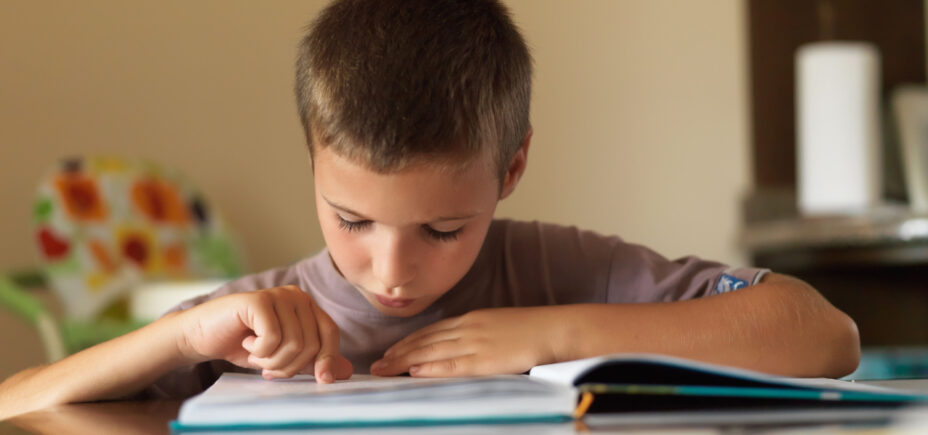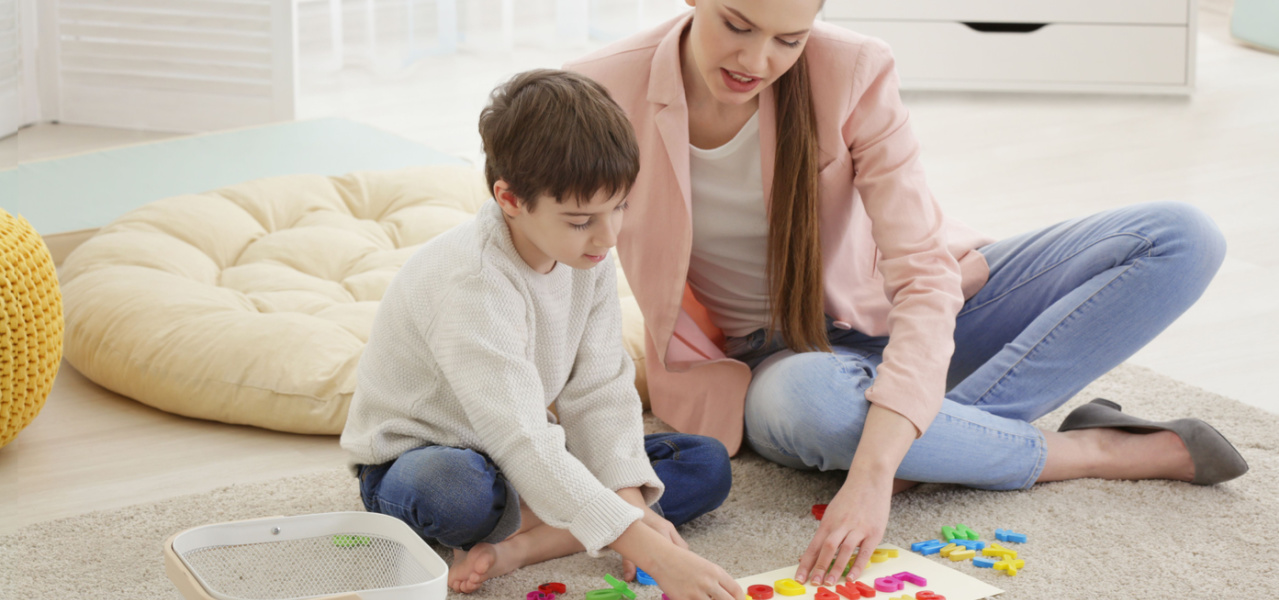
How to Teach Phonics to Second Graders
Tips and activities to help make learning phonics fun for your second grader.
Phonics and Phonemic Awareness
Second graders have been building their phonics skills for years, learning the sounds that letters make and combining them into words. They only need to add a few more tools to their toolkit to allow them to tackle pretty much any word they come across. This age group focuses on concepts like vowel teams, prefixes and suffixes, and irregular but common patterns.

In the world of words, there’s a hidden beat that gives language its rhythm, and we uncover this rhythm through syllables. A syllable is like a music note of speech, and many words have two or three syllables that create a delightful pattern.
Imagine saying “but-ter-fly.” You can feel the rhythm as your voice jumps from one syllable to the next. These syllable patterns help us break down and understand words, just like cracking a secret code.
Phonemic awareness also helps second graders grasp phonics. Phonemic awareness is a super cool skill that lets you tune into the smallest sounds of spoken words. It’s like being a detective for sounds! Imagine you have a magic ear that can catch even the tiniest parts of words.
A research study published by scholar Patricia M. Cunningham highlights the value of this approach, explaining that “Children need cognitive clarity about what they are learning. When you have cognitive clarity about a task, you are more likely to persist in your efforts because you anticipate the goals you will eventually reach.” This clarity is crucial in phonics, where understanding each sound’s role within words enhances a child’s ability to decode them effectively.
With phonemic awareness, you can hear, identify, and play with individual phonemes, which are the sounds that make up words. Picture the word “cat.” You can actually hear the separate sounds – “cuh,” “aah,” and “tuh” – that come together to create the word.
Here are the skills they need, along with fun and engaging ways to teach phonics to second graders.
Work on Vowel Teams
Second graders already know about long and short vowels, including silent E. But what about when two vowels appear together in a word? Vowel teams present a few challenges.
Sometimes they make a single sound, and kids need to know which one to pronounce. In other cases, the sound begins as one vowel and transitions toward the other, a concept known as a diphthong (think “loud” or “oil”). Mastering vowel teams means memorization, which takes a lot of practice.
Vowel Teams Activities
- Take a vowel walk. In many vowel pairs, kids can use the saying, “When two vowels go walking, the first one does the talking.” For example, in the word “sea,” the first vowel says its name while the second one is silent. Write out words that fit this pattern with chalk on the sidewalk. Have kids walk along the word and sound it out, jumping over the second vowel to show it doesn’t make a sound.
- Rhyme time. Write vowel teams (get a full list here) on cards, and have your child draw one. Then, ask them to say the sound it makes, and list words using that sound. Write them out, then use those words to make a silly rhyming poem.
- Make word ladders. Try this idea from 3 Dinosaurs: Choose one vowel team, and write it multiple times in a vertical row down the middle of a page. Then, grab some alphabet magnets and add letters to the beginning and end of each row to form a new word.
- Vowel team worksheets. Continue vowel team practice with worksheets designed to help your child recognize and understand vowel teams and the sounds they make. These worksheets also provide opportunities for your child to color in pictures, complete a crossword puzzle, and work on their handwriting skills.
Master R-Controlled Vowels
When a vowel is followed by the letter R, the sound it makes is neither short nor long. In fact, three vowels make exactly the same sound when followed by R: “er,” “ir” and “ur” are all pronounced /er/ (as in “dirt” or “burn”). “Ar” and “or” words have their own pronunciations. It’s another one of those things kids just have to learn and memorize.
R-Controlled Vowels Activities
- Beware of Bossy R. Remind kids that when R follows a vowel, it gets a little bossy! Check out this cute Jack Hartmann video to learn a catchy song to help your child remember.
- Search for words. Find a reading passage that includes lots of r-controlled vowel words. Ask your child to find and circle those letter combinations, then tell you how each one is pronounced.

- Make the connection. If your child is struggling to remember this rule, have them draw an arrow from the “r” back to the vowel as a reminder. You can also simply have them use their finger or a pointer to trace a line from “r” to the vowel as they read.
Learn Common Prefixes and Suffixes
Prefixes are like magical add-ons that you put at the beginning of a word. They give the word new meaning or change how it’s used. For example, think about the word “unhappy.” The “un-” part is a prefix that turns “happy” into its opposite, making it mean “not happy.”
Suffixes, on the other hand, are the incredible endings you can attach to words. Suffixes also change the word’s meaning or how it works in a sentence. Consider the word “playful.” The “ful” at the end is a suffix that turns “play” into an adjective, giving the idea that someone or something is full of play or fun.
So, prefixes and suffixes are like word wizards. They wave their magic wands and make words even cooler and more powerful. With prefixes and suffixes, you can unlock a whole new world of vocabulary and express yourself in super creative ways!

Learning common prefixes and suffixes like “un-” or “-ful” not only helps kids decode (sound out) a word, but also makes it easier to determine the meaning. As kids break words into syllables to make them easier to decode, teach them to look for those prefixes and suffixes and use them to make sense of new words. Get a list of common prefixes and suffixes here.
Prefix and Suffix Activities
- Make prefix flip books. Take a tip from Book Units Teacher and make some easy flipbooks. Cut strips of paper and staple them together at the right end. Make the bottom strip longer than the strips on top, and write a prefix at the beginning so it’s always showing. On the other strips, write base words that go with the prefix. Kids flip the pages and read each new word they’ve created.
- Wave suffix wands. Cut out circles of colorful paper and write different suffixes on each. Then, tape each circle to the end of a drinking straw to create “suffix wands.” Have your child hold a suffix wand up to a base word, and read the new word they’ve made.
- Assemble prefix and suffix puzzles. Use pieces from old puzzles, by either painting the fronts white or simply turning them over and writing on the backs. Fit two pieces together and write the prefix or suffix on one, and the base word on the other. Ask your child to match up the pieces and read the resulting words.
Recognize Common Irregular Spelling Patterns
English is full of irregular spelling patterns, but some of them actually happen so frequently that students can be taught to recognize them. This includes “qu” words, along with patterns like “ew,” “ey,” or “-tion.” Once again, this is something they’ll need to memorize, but once they do, they’ll find they can decode a lot of complex words!
Irregular Patterns Activities
- Hold a Q-U wedding. This very cute idea is always popular with kids! Hold a mock wedding with the letters Q and U, which always appear together in the English language. Learn more from this post on Sight and Sound Reading.

- Write a silly story. Make a list of words that include the irregular spelling pattern you want to work on. Ask kids to write a story that includes all those words, then read it out loud to you.
Keep Learning!
For more fun first grade learning, check out:
ABCmouse’s expert advice review process:
Our team of ABCmouse Curriculum Experts, made up of talented professionals in early childhood education and development, take a close look at educational content and learning claims. They put in the effort to make sure our information is accurate and current. We have a certified educator or another respected authority review the content, matching their expertise with the topic at hand. They’ll make sure the content is thorough and follows the latest research and educational guidelines. If they think we can make things even better, they’ll chat with our editorial team, and we’ll make those improvements right away. Only after a reviewer gives their thumbs-up does a piece of content get the official stamp of approval in the byline.
Legal Disclaimer: Any information, materials, or links to third-party resources are provided for informational purposes only. We are not affiliated with and do not sponsor/endorse these third parties and bear no responsibility for the accuracy of content on any external site.

